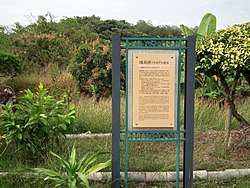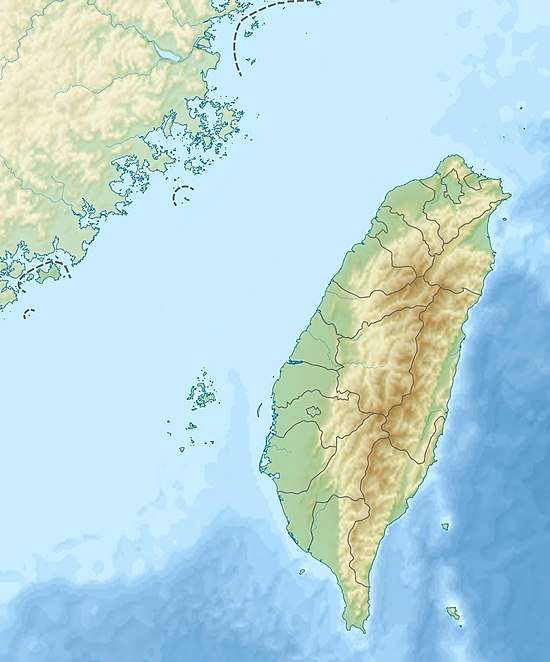Fengbitou Archaeological Site
The Fengbitou Archaeological Site (Chinese: 鳳鼻頭遺址; pinyin: Fèngbítóu Yízhǐ) is an archaeological site in Linyuan District, Kaohsiung, Taiwan.
鳳鼻頭遺址 | |
 | |
 Fengbitou Archaeological Site Taiwan | |
| Location | Linyuan, Kaohsiung, Taiwan |
|---|---|
| Coordinates | 22°30′38.1″N 120°22′2.4″E |
| Type | Archaeological site |
| Part of | Fengshan Hill |
| Area | 9.77 hectares |
| Site notes | |
| Discovered | 1941 |
| Excavation dates | 1945, 1965 |
History
The site was discovered by Japanese scholar Sueo Kaneko around 1941. In 1945, Japanese archaeologist Kiyotari Tsuboi excavated the site and presented his findings at an international conference in 1953. In 1965, Taiwanese archaeologist Jhang Guang-jhi further excavated the site. The excavation unearthed the Dapenkeng, Niouchouzih and Fengbitou cultures.
The site was designated as a national historic monument by the Ministry of the Interior in February 2000 and further designated as a national historic site in 2006.
Geology
The 9.77-hectare site is located at the slope of Fengshan Hill with a shape of a fan. The hill has a height of 15-20 meters and the site is located at the elevation of 28-55 meters above sea level.[1]
See also
References
- "Fengbitou Archaeological Site". Bureau of Cultural Heritage, Ministry of Culture. Retrieved 16 January 2017.
| Wikimedia Commons has media related to Fengbitou Archaeological Site. |